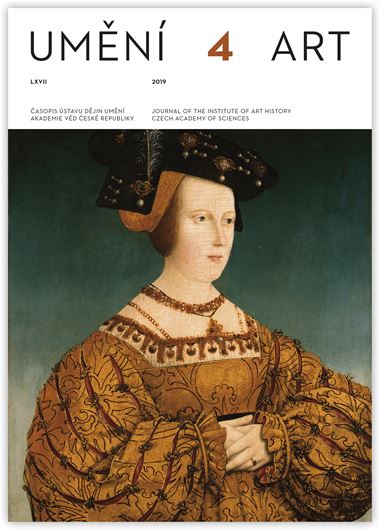Blanka Kubíková
The Image of Princess and Queen Anne of Bohemia and Hungary in the Habsburg Dynasty Self-Presentation
Anne of Bohemia and Hungary (1503–1547), the daughter of Vladislaus II, King of Bohemia and Hungary, played an important role in European history. Her claim to the throne facilitated Ferdinand I’s acquisition of the Bohemian and Hungarian crowns in 1526 and the Habsburg dominance over Central Europe. This study illustrates how Anne’s portraits reflected the changes of her position and also the importance of Anne’s public image when carrying out the Jagiellonian and mainly Habsburg political plans. The double betrothal of the Habsburgs and Jagiellonians in 1519 is an important milestone after which Anne was portrayed as a symbol of the pledged alliance, yet not with her groom but rather with the other fiancée, Archduchess Mary. The reason behind this unusual presentation was the long uncertainty over which Habsburg would marry Anne. When Archduke Ferdinand and Anne began to rule over the Austrian lands after their marriage in 1521, the new couple was presented in a traditional portrait style. After 1526, Anne’s portraits referring to the con- tinuance of the Jagiellonian rule were instrumental in the adoption of Ferdinand I and the Habsburgs by Bohemia and Hungary. In these portraits, the queen’s position is emphasised over Ferdinand’s compared to the portraits intended for Austria and later for the empire where dif- ferent priorities prevailed. After Ferdinand I was crowned as King of the Romans in 1531, Anne’s role was diminished; the Habsburg presentation mainly focused on familial cohesion, which means the concord between Ferdinand and his brother, Emperor Charles V, and on the introduction of the new generation of rulers. — It is difficult to estimate the extent to which Queen Anne actively shaped her image. Nevertheless, compared to some Renaissance female rulers, mostly dowagers and maidens who shaped their images in accordance with their more or less independent reigns, Anne’s contribution was less distinctive. Although Queen Anne lived by King Ferdinand’s side and was a caring mother of a large family, she did not lead an absolutely pas- sive public life. She was Ferdinand’s deputy and advisor; Anne’s overall image in the Habsburg portrait presentation corresponds to this complex characteristic.
Blanka Kubíková: blanka.kubikova@ngprague.cz
Full-text in the Digital Library of the Czech Academy of Sciences:
https://kramerius.lib.cas.cz/uuid/uuid:cbee70d1-d9a8-463d-9717-a1104c9fe859
< back

